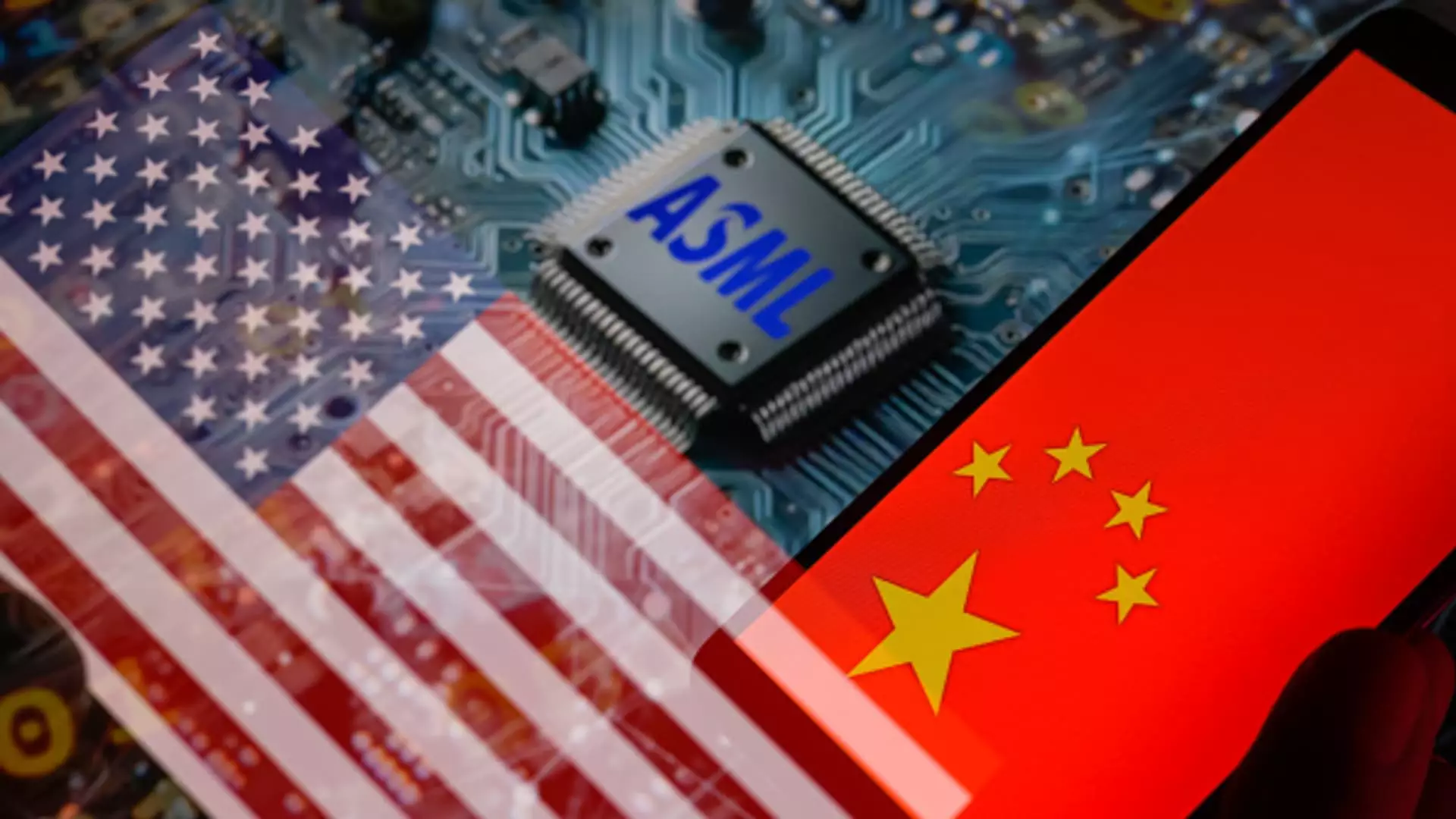The global semiconductor landscape is undergoing significant changes as geopolitical tensions heighten, particularly regarding trade relations between the United States and China. A key player in this sector, ASML Holding N.V., has found itself in a precarious position as it grapples with new export restrictions imposed by the U.S. These restrictions primarily target its cutting-edge lithography machines, crucial for chip manufacturing. ASML’s recent earnings report, released under unexpected circumstances, provides insights into the company’s anticipated revenue trajectory, particularly concerning its business in China.
In its latest earnings report, ASML revealed an expectation of net sales ranging from 30 billion to 35 billion euros (approximately $32.7 billion to $38.1 billion) for the year 2025. This forecast marks a significant downward adjustment from previous projections, reflecting the adverse effects of geopolitical dynamics on its sales pipeline. Despite reporting robust third-quarter revenues of 7.5 billion euros—exceeding analysts’ expectations—ASML’s booking figures fell woefully short. The company reported net bookings of 2.6 billion euros ($2.83 billion), starkly below the anticipated figure of 5.6 billion euros, prompting a drastic drop in its share price. Investors reacted sharply, with ASML experiencing a loss of over $50 billion in market capitalization within a single day, showcasing market concerns over the company’s future outlook.
The geopolitical context surrounding ASML’s operations is complex. The U.S. restrictions on advanced chip manufacturing tools aimed at curtailing China’s technological capabilities have created a ripple effect throughout the semiconductor supply chain. As a critical supplier of extreme ultraviolet lithography machines, which are essential for manufacturing leading-edge chips, ASML’s dependence on its Chinese customer base is significant. Although access to its most advanced machinery has remained off-limits to Chinese firms, demand for ASML’s deep ultraviolet (DUV) machines surged as companies in China sought to stockpile these tools before the full effect of export controls set in.
Despite the initial upsurge in sales to China, ASML’s CFO Roger Dassen has indicated that the business will eventually trend towards a “more normalized” contribution from the Chinese market. Analysts have suggested that ASML’s guidance, projecting approximately 20% of its total revenue from China in 2025—a reduction from last year’s 29%—may reflect the anticipated consequences of ongoing restrictions.
The market’s reaction to ASML’s projections signals investor anxiety regarding the company’s reliance on the Chinese market. Bank of America analysts remarked on a potential “sharp decline” in revenue from China, estimating a staggering 48% decrease year-over-year, which far exceeds previous forecasts. This dramatic downturn exemplifies how export controls might severely constrict ASML’s revenue streams, not just from China but possibly from other international customers that could be affected by the ripple effects of these geopolitical tensions.
Commentary from experts such as Abishur Prakash reflects broader concerns about ASML’s dependency on China. Prakash articulated that with restrictions tightening around its business, the future demand for ASML’s machines could dwindle as China’s access to advanced technology becomes increasingly limited. The implications extend beyond immediate revenue losses, potentially reshaping the semiconductor industry, as leading firms could struggle to adapt to these new realities.
The evolving dynamics of the semiconductor industry underscore the importance of resilience and adaptability for companies like ASML. As the European Union and the Netherlands have taken cues from U.S. export policies, the potential for further restrictions could lead to an elongated period of uncertainty in China’s market contributions.
Yet, there may be an ironic silver lining. As U.S. restrictions push Chinese firms towards acquiring older generation DUV machines, ASML could still benefit in the short term from increased orders for this tier of machinery. However, longer-term forecasts illustrated by ASML’s leadership suggest that this boost could be temporary, necessitating a strategic shift for the company to sustain its position in the evolving global landscape.
ASML’s current predicament serves as a microcosm of the larger global tensions affecting the semiconductor industry. As the company navigates the dual challenges of geopolitical restrictions and shifting market demands, its future revenues—particularly from China—are highly contingent on maintaining strong customer relationships and adapting to new regulatory landscapes. The intersection of technology and international politics continues to redefine the operational frameworks for pivotal firms like ASML, presenting both opportunities and formidable challenges ahead.

